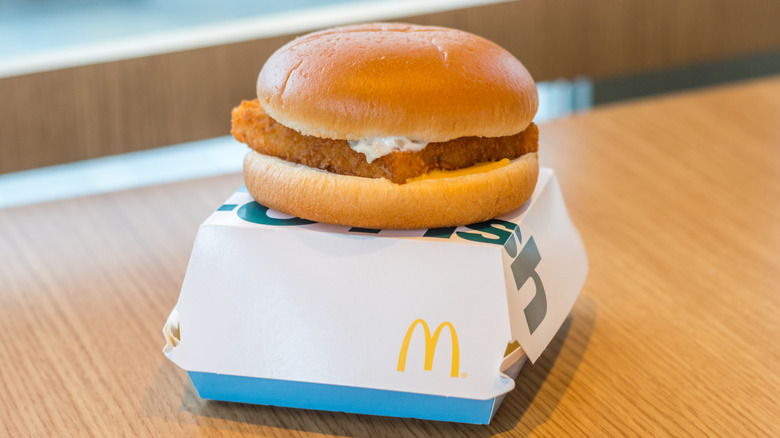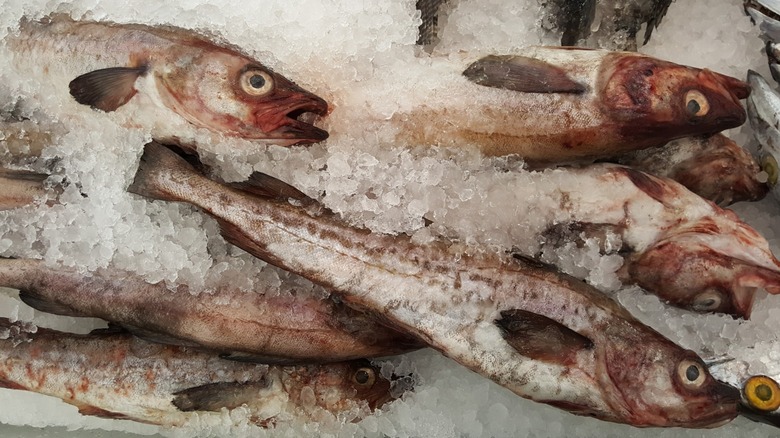Here's What Type Of Fish Is In Your McDonald's Filet-O-Fish Sandwich
Have you ever wondered what kind of fish is in McDonald's Filet-O-Fish sandwich? If so, you're not alone: McDonald's sells about 300 million of them per year (as of 2023). With such large numbers being consumed, it's not surprising they use one of Alaska's most plentiful fish: Alaska pollock.
But while McDonald's Filet-O-Fish is probably fresher than you might expect, you might now be wondering how sustainable can this amount of fishing actually be. According to McDonald's, the fish destined for your Filet-O-Fish sandwich are sustainably wild-caught as opposed to being farm-raised, and the strict regulations that govern the industry should ensure a population that isn't susceptible to over-fishing. They're also supposed to be fished in ways that result in almost no bycatch. (That's the measure of other species that are also caught along with the fish or are killed by fishing practices.)
Interestingly, the Filet-O-Fish was almost made with a very different fish. The initial plan was to use halibut, which was then switched to cod. It remained a cod sandwich for around 50 years, but today, McDonald's customers are served up a fish that's often described as a sustainable and nutritious powerhouse. But, the sustainability claim comes with some controversy.
A look into the sustainability of Alaska pollock
In 2013 McDonald's started displaying the iconic blue fish of the Marine Stewardship Council, becoming the only national fast food chain in the U.S. to carry this distinction. According to McDonald's corporate, "Globally, 100% of the fisheries from which McDonald's sources whitefish are from verified sustainable sources. McDonald's USA uses solely Marine Stewardship Council (MSC)-certified wild-caught Alaska Pollock for its Filet-O-Fish sandwich."
While the MSC has been a reliable certification in the past, for over a decade the huge growth in organizations that seek out their certification has led to some reports that MSC is getting lax in its standards and inspections. This makes the MSC sustainability certification somewhat controversial. Even Seafood Watch — the gold standard that produces a rating system for fish — doesn't give Alaska pollock a Green rating for "best choice." Rather, it's given a Yellow, meaning "This seafood poses a moderate environmental risk." And a study conducted by On The Hook found that MSC has lowered its certification standards and has lost much credibility.
Alaska pollock isn't, however, rated Red ("Avoid") by Seafood Watch, and it does still seem to be a better option that other species of white fish, including the endangered fish Costco refuses to sell. It's also prized for its mild flavor, flaky texture, and nutritional benefits. It's high in omega-3 fatty acids, and since it's frozen while it's still at sea, you get surprisingly fresh Alaska pollock at McDonald's.

